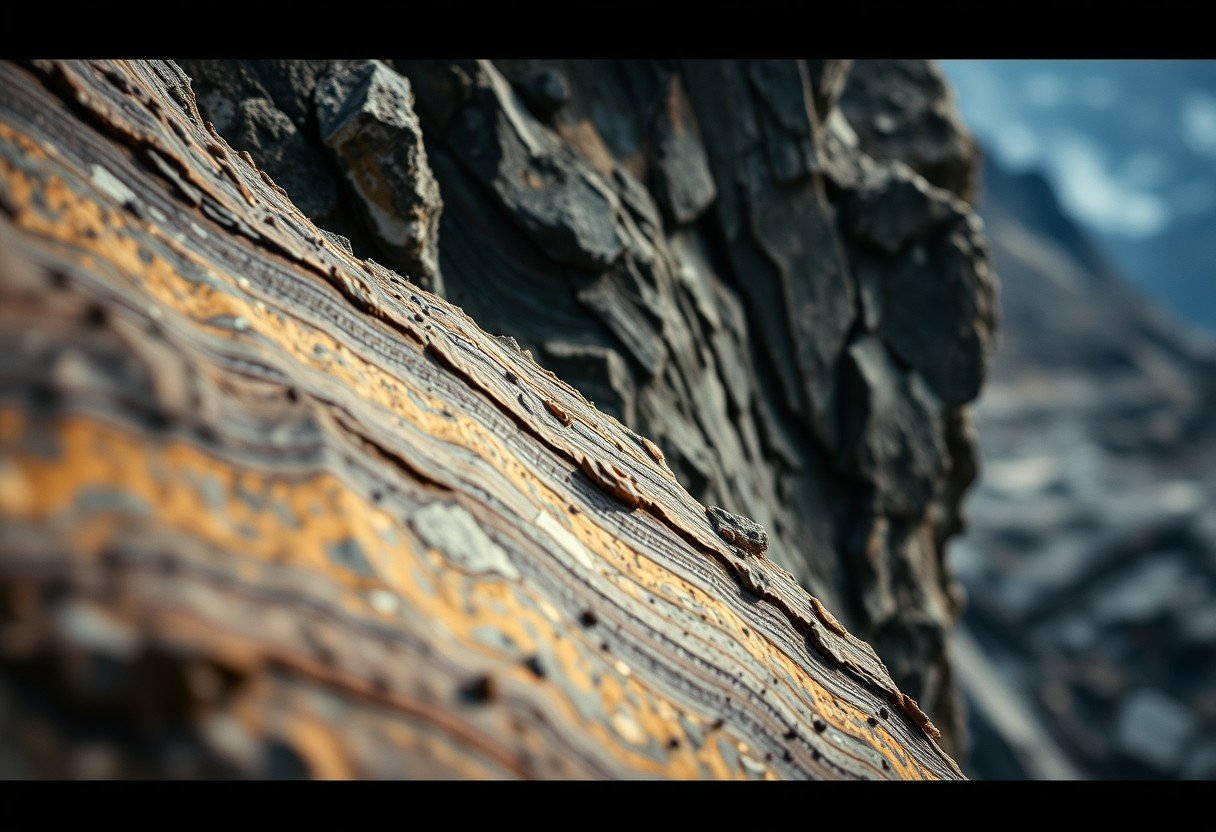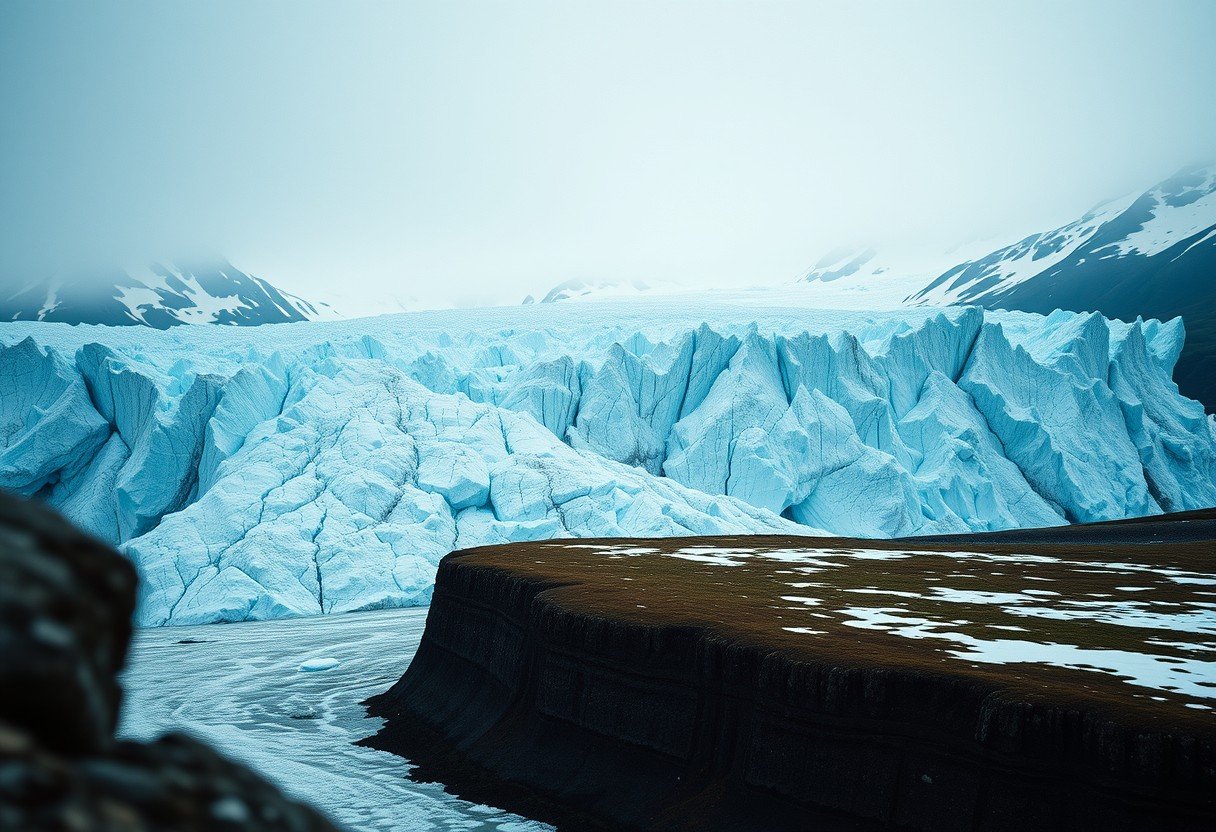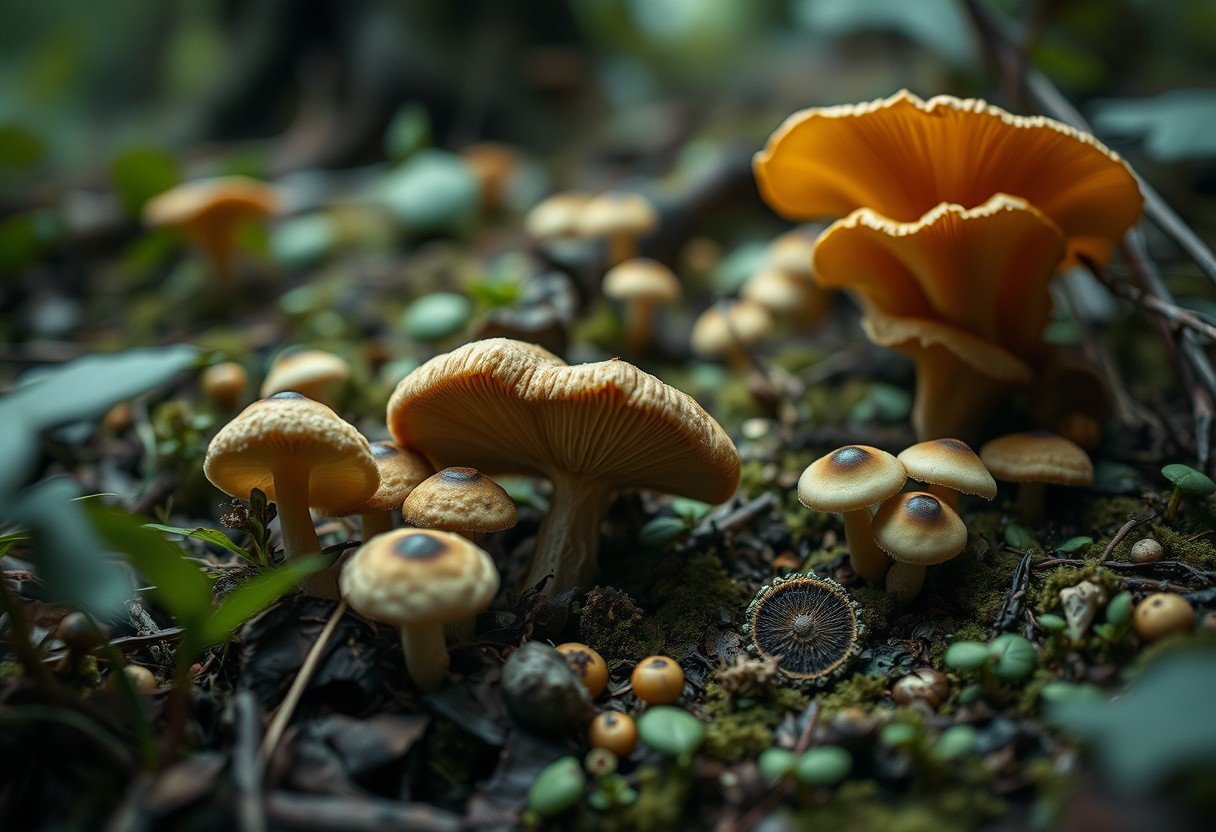Have you ever picked up a rock with beautiful, parallel layers and wondered how it formed? You’re looking at a foliated metamorphic rock. These incredible formations get their distinct appearance from tiny, flat mineral grains that align under immense heat and pressure deep within the Earth. Understanding these platy minerals is the key to unlocking the story of our planet’s most dramatic geological events, from mountain building to the shifting of continents.
What is Foliation in Metamorphic Rocks?
Foliation is the single most defining feature of many metamorphic rocks. It refers to the parallel alignment of mineral grains, which creates a layered or banded appearance. Think of it like a deck of cards that has been pressed down and spread out; all the cards line up in the same direction.
This texture is not present in the original rock, known as the protolith. Instead, it develops during metamorphism when the rock is subjected to directed pressure. This pressure, which is stronger in one direction than others, squeezes the mineral grains and forces them to reorient themselves.
Foliation provides crucial clues about the intense forces that shaped the rock deep within the Earth’s crust. Rocks like slate, schist, and gneiss are classic examples where you can easily see this layering. The type and degree of foliation can tell a geologist a lot about the temperature and pressure conditions the rock experienced.
Key Platy Minerals That Create Foliation
The distinct layers in foliated rocks are primarily caused by platy minerals, which are naturally flat or sheet-like. When pressure is applied, these minerals act like tiny weather vanes, rotating to align themselves perpendicular to the direction of the force. This alignment is what creates the visible foliation.
Several common minerals are responsible for this effect. Their presence not only creates the texture but also influences the rock’s color, luster, and even its name. Recognizing these minerals is the first step to identifying different types of foliated metamorphic rocks.
The table below highlights some of the most important platy minerals you will find.
| Mineral Name | Common Color | Key Characteristic |
|---|---|---|
| Mica (Muscovite & Biotite) | Silvery, Brown, or Black | Very shiny and splits into thin, flexible sheets. |
| Chlorite | Green | Gives rocks like greenschist their color; has a platy feel. |
| Talc | White or Gray | Extremely soft and feels soapy to the touch. |
| Graphite | Silver to Black | Has a greasy feel and is the same material as pencil lead. |
How do These Parallel Structures Form?
The formation of parallel structures in metamorphic rocks is a direct result of intense geological processes. It all starts when an existing rock is buried deep in the Earth’s crust, often during the collision of tectonic plates.
Down there, the rock is exposed to extreme heat and directed pressure. This pressure isn’t uniform like the pressure you feel underwater; it’s much stronger in one direction. This directional stress is the driving force that causes the platy mineral grains to rotate and align.
As the minerals align, they create planes of weakness within the rock. This is why foliated rocks, like slate, tend to split easily into thin, flat sheets. The process not only changes the rock’s texture but can also lead to the growth of new minerals that are stable under these high-pressure, high-temperature conditions.
The Visual Beauty of Foliated Rocks
Foliated metamorphic rocks are not just geologically significant; they are also visually stunning. The alignment of different minerals creates intricate patterns, bands of color, and unique textures that make them highly sought after for both scientific study and decorative purposes.
The color variations are a direct result of the rock’s mineral composition. For instance, the dark and light bands in gneiss are formed by the separation of minerals like biotite mica (dark) and quartz or feldspar (light). The shimmering, silvery surface of a schist is due to the alignment of countless tiny mica flakes. Rocks rich in chlorite will have a distinct green hue, while those with garnet can feature beautiful red crystals embedded within the layers.
Beyond color, the surface patterns themselves tell a story. You might see the perfect, flat cleavage of slate, the wavy, wrinkled surface of phyllite, or the coarse, banded appearance of gneiss. Each pattern is a fingerprint of the specific metamorphic conditions the rock endured over millions of years.
Practical Uses in Our Daily Lives
The unique properties created by platy mineral grains make foliated metamorphic rocks incredibly useful in our everyday lives. Their durability, beauty, and tendency to split into flat planes have made them valuable materials for centuries. You have likely encountered these rocks without even realizing it.
From building materials to artistic mediums, the applications are diverse. The specific use often depends on the type of rock and the degree of its foliation.
Some of the most common applications include:
- Roofing and Flooring: Slate is famous for its use as a roofing tile and flooring material because it is waterproof and splits into perfectly thin, durable sheets.
- Countertops and Decorative Stone: Gneiss and some types of schist are popular for kitchen countertops and wall cladding due to their beautiful, wavy bands of color and high durability.
- Landscaping: Larger, rougher pieces of foliated rocks are often used in gardens and landscaping to create retaining walls, pathways, and decorative features.
By understanding their properties, we can appreciate not only their natural beauty but also their functional role in our homes and cities.
Frequently Asked Questions
What is the difference between foliated and non-foliated metamorphic rocks?
Foliated metamorphic rocks have a layered or banded appearance due to the alignment of mineral grains under directed pressure. Non-foliated rocks, like marble or quartzite, do not have this layered texture because their minerals are not platy and they formed under uniform pressure.
Why do some foliated rocks split into sheets?
Foliated rocks split into sheets along their foliation planes. This is because the aligned platy minerals, like mica, create surfaces of weakness within the rock, allowing it to break cleanly in one direction.
Can you tell how a rock was formed by looking at its foliation?
Yes, the degree of foliation can indicate the intensity of metamorphism. For example, slate is a low-grade metamorphic rock with very fine grains, while gneiss is a high-grade rock with coarse grains and distinct color banding.
What is the most common platy mineral in metamorphic rocks?
Mica, in its two main forms (muscovite and biotite), is arguably the most common and important platy mineral for creating foliation. Its shiny, flaky presence is a key feature in rocks like schist and phyllite.
Are foliated rocks good for construction?
It depends on the rock. Slate is excellent for roofing and flooring because it’s strong and impermeable. However, some rocks like schist can be weak along their foliation planes and may not be suitable for structural purposes.









Leave a Comment